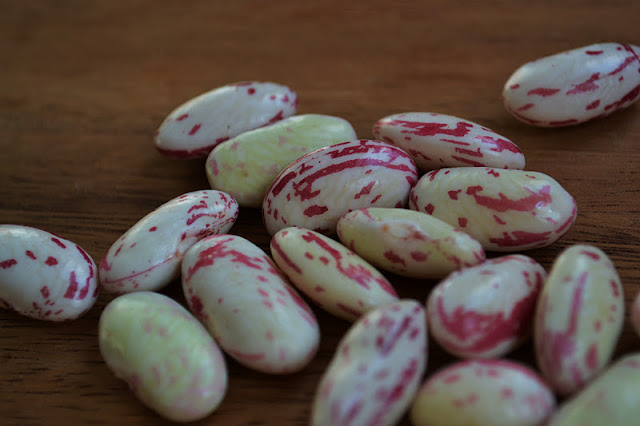
I have ventured into a whole new realm of healthy food preparation and it is
so
awesome. Ladies and gentlemen, I have successfully created my first
batch of lacto-fermented pickles! And they are absolutely delicious and
probably the easiest thing to make. Seriously, they're
super easy. And they're
super healthy, too! I went to the farmers market a few weeks ago and watched a woman do a demonstration about making these pickles. I've wanted to make these for awhile (reading food blogs makes you want to make a lot of things). But after learning how easy it truly was while watching the demonstration, I knew I had to do it immediately.
Now what is lacto-fermentation and how on earth are pickles healthy?
Well,these pickles are made sour not by vinegar, but by natural
beneficial bacteria. Lacto-fermentation happens when the starches and
sugars in vegetables
and fruit convert to lactic acid by a friendly lactic-acid producing
bacteria. Basically, fermented vegetables will give you the same
digestive and immune system boosting benefits of cultured yogurt with
the added bonus of vitamins, which dramatically increase during the
fermenting process. Lacto-fermentation is the old fashioned way of making pickles, and boy are these pickles tasty.
I realize that I should have posted this recipe a few weeks ago when cucumbers were abundantly in season, but you probably can still find some pickling cucumbers around. If you can't find any, just bookmark this recipe and make them next summer. I apologize for my lack of 'keeping with the seasons'.
I am definitely not a lacto-fermentation expert, so if you make these, consult google and other blogs for more expertise and detail. Just know that after a few days, the water will turn cloudy and foamy and the cucumbers will start to look a little dull in color. You may see bubbles and you may even see some slime form on the top of the water. Do not be afraid, though! As long as your pickles and brine smell good, you'll be fine. I was a little nervous when my pickles looked a little funny, but after researching and tasting them, I knew they were fine. They tasted fantastic. Now, if yours smell a little off, this probably means your brine is contaminated with some unfriendly bacteria, so toss them and try again.
Garlic Dill Pickles
4-5 kirby cucumbers (pickling cucumbers), washed very well and quartered lengthwise
1 small bunch of fresh dill, flowering dill, or dill seeds (
not dried dill weed)
3-4 large cloves of garlic, sliced
1 tsp whole peppercorns
1 1/2 tablespoons unrefined sea salt or pickling salt (not iodized salt)
2 cups filtered, purified, or distilled water
1 quart size jar with lid, cleaned and rinsed
very well
1. Put garlic, peppercorns, and dill in the bottom of the jar. Add the cucumbers vertically until they all snugly fit into the jar. Make sure they're in there nice and snug! Be sure there is about 1 1/2-2 inches of space between the top of the cucumbers and the opening to the jar.
2. In a pitcher or bowl, add the salt and water and stir very well until the salt has dissolved. This is your brine.
3. Pour the brine into the jar over the cucumbers until the they are completely submerged in brine. You don't want any cucumbers poking out of the brine. The salty water keeps bad bacteria from gorwing and promotes good bacteria to multiply.
4. Place the lid on the jar. Let the jar sit out on your countertop for at least 3 days. I made a great batch by leaving them our for 5 days. They were nice and sour. But time will vary and all you need to do is taste them to see if they're sour enough. When they're to your liking, put the jar in the refrigerator and they keep really well for quite awhile.
For more fabulous food and photos from Nourish The Roots,






















































